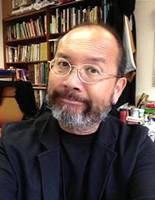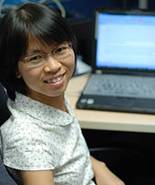在电子媒体时代,信息技术的快速发展和语言文化的多元融合使得以语言为中心的传统识读教学难以满足多语言、多文化、多模态的交流需求。为了提升我国高校外语教师在新媒体时代的多元识读能力及相关研究能力,广东外语外贸大学与香港理工大学于2014年6月邀请了多元识读研究领域的泰斗Gunther Kress教授和领军学者Len Unsworth教授等作为主旨发言人成功举办了首届“广外-香港理工”多元识读论坛,开启了中国多元识读研究的新里程。为进一步提升我国高校外语教师的多元识读能力和推进多元识读研究在我国的发展,广东省高校外语教师教学发展示范中心联合香港理工大学英文系举办第二届“广外-香港理工”多元识读论坛。论坛将于2015年5月18—21日在广东外语外贸大学举行。详情如下:
一、参会人员
全国外语类教师
二、会议主题:不同学科教育中的多元识读:理论与应用
三、会议议题(包括但不限于):
1.课堂多模态语篇
2.教材的多模态研究
3.图画书
4.图像识读
5.多元识读能力培养
6.多元识读能力评估
7.新媒体技术与应用
8.多媒体教学材料
四、会议时间及地点
2015年5月18—21日,广东外语外贸大学北校区
报到时间:2015年5月18日下午2:30-6:00
报到地点:广东外语外贸大学北校区第七教学楼大厅
(广州市白云区白云大道北丛云路,广外北门口)
五、主讲专家与点评专家
Mary Kalantzis:新伦敦小组成员、多元识读研究领军人物之一,美国伊利诺伊大学香槟分校教育学院院长;曾任澳大利亚墨尔本皇家理工大学语言及社区服务学院教育系主任、澳大利亚教育学院院长协会主席。出版学术著作包括Literacies (剑桥大学出版社), New Learning:Elements of a Science of Education (剑桥大学出版社), Ubiquitous Learning(伊利诺伊大学出版社)等。
Bill Cope: 新伦敦小组成员、多元识读研究领军人物之一,美国伊利诺伊州大学香槟分校教育政策研究院教授;受美国联邦教育部教育科学研究院及比尔-梅林达盖茨基金会基金资助,开展创新网络写作及语义出版环境的发展研究。其著作包括The Future of theAcademic Journal(牛津大学出版社), Towards a SemanticWeb: Connecting Knowledge in Academic Research(牛津大学出版社)等。
Len Unsworth:多元识读研究的领军人物之一,澳大利亚天主教大学教授,出版和编辑相关专著十多本,其中TeachingMultiliteracies across the Curriculum已成为多元识读研究的必读书目之一。2004年获澳大利亚识读教育者协会颁发的“最具价值引用奖”(Citation of Merit Award for Research);2006年获澳大利亚教育、科学与职业培训部颁发的“识读提升突出贡献奖”(Outstanding Contribution to Improving Literacy)。
Mark Evan Nelson: 毕业于加州大学伯克利分校,日本神田外语大学英语语言研究中心主任。曾任职于澳大利亚迪肯大学、新加坡国立教育学院。在Written Communication, Language Learning & Technology等期刊发表多元识读研究论文多篇,为Blackwell的《应用语言学百科全书》撰写Multimodality andLiteracy词条。
Francis Robert Low:香港理工大学英文系的专任教师,研究方向包括系统功能语言学、多模态、多元识读和符号学研究等。
冯德正:博士,香港理工大学英文系助理教授,近期科研项目主要关注具有重要社会意义的语篇(如国家形象、课堂教学)的多模态符号建构。
张艺琼:博士、副教授,广东外语外贸大学外国语言学及应用语言学研究中心专职研究员,主要研究领域为多模态语篇分析、多元识读及跨文化对比研究等。
六、会议形式:大会主旨发言、小组发言、专家点评。
本次论坛将邀请多位专家对部分参会者的小组发言进行逐个点评,以助于参会者理清研究思路,明晰研究方向,解决存在的疑惑,拓展学术视野,提升研究和创新能力。
七、证书
参加论坛的代表可获由广东省高校外语教师教学发展示范中心颁发的参会证书。
八、食宿及交通
餐饮由会务组统一安排;住宿和差旅费用自理。
住宿及交通信息请参考附件2。
九、关于收费
1400元/人(含会务费和资料费)
收费方式1:推荐转账汇款,请在5月11日之前办理(转账汇款必须注明“多元识读+姓名”),报到时请出示财务支付凭证复印件。
全称:广东外语外贸大学
开户银行:中行广州黄石东路支行
账号:630157745051
收费方式2:现场收费方式为现金收费,请学员自行准备。(学校附近有中行ATM机)
十、报名办法及注意事项
(一)报名办法:所有参会人员请登录广东省高校外语教师教学发展示范中心官方网站活动报名地址http://ctdapply.gdufs.edu.cn/进行网上在线报名。(首次登录,需要进行账户注册,可凭此账号查看报名相关情况,并参加广东省高校外语教师教学发展示范中心其它活动)
(二)上网填写报名表之后,请于2015年3月20日(周五)前将论文摘要发至gdwyjspx@gdufs.edu.cn电子邮箱,邮件主题为“多元识读+姓名”,论文附件命名为“多元识读+姓名+题目”(小组发言分常规小组发言和点评小组发言,因此请在摘要内明确注明是否需要专家点评)我们将邀请专家评审后确定小组发言的参会者,会务组将于2015年4月17日(周五)前寄发邀请函。不提交论文的参会者,报名截止日期为2015年5月10日。
(三)广东省高校外语教师教学发展示范中心官方网址:http://ctd.gdufs.edu.cn
(四)联系方式
联系人:郑老师、林老师电话:020-36641382 邮箱:gdwyjspx@gdufs.edu.cn
主办:广东省高校外语教师教学发展示范中心
承办:香港理工大学英文系
广东外语外贸大学教师发展中心
广东外语外贸大学外国语言学及应用语言学研究中心
附件1:
第二届广外-香港理工多元识读论坛报名表
姓名 |
|
性别 |
|
身份证号 |
|
职称/职务 |
|
学位 |
|
研究方向 |
|
联系电话 |
|
电子邮箱 |
|
通讯地址及邮编 |
|
工作单位 |
|
交费方式 |
□银行转账 □现场交费 |
是否发言 |
□是 □否(不需要发言者以下空格不填) |
论文题目 |
|
是否需要专家点评 |
□是 □否(不需要者即为常规小组发言) |
论文摘要 (英文300字内) |
|
| |
|
|
|
|
|
|
报名办法:请登录广东省高校外语教师教学发展示范中心官方网站活动报名地址http://ctdapply.gdufs.edu.cn/进行网上在线报名。(首次登录,需要进行账户注册,可凭此账号查看报名相关情况,并参加广东省高校外语教师教学发展示范中心其它活动)。
附件2:
住宿及交通信息
一、推荐住宿地点(与会代表根据自身需求选择并自行联系):
1.广外干训楼(位于校园内,联系时说明参加“第二届广外-香港理工多元识读论坛”将以广外优惠价入住,数量有限,先到先得。电话:020-36641900,单人入住时酒店前台将随机根据性别安排标准双人间,如单人入住标间请补齐房费差价。
2.保利山庄酒店(广州市白云区丛云路68号,四星级,位于广东外语外贸大学北校区北门附近。电话:400-755-8888)
3.柏豪酒店(广州市白云区白云大道北丛云路,三星级,位于广东外语外贸大学北门附近,电话:020-36642008)
二、交通信息
1.如果您在广州火车站或省汽车站可乘坐803路公交车,在黄石东路口站下车往回走200米,或者乘坐805路、529路公交车,在外语学院站下车即到广外正门,然后沿丛云路往北走400米,便可抵达广外北门;
2.如果您在广州东站乘坐841路公交车到黄石东路口站下车,过天桥沿丛云路往北走200米,便可抵达广外北门;
3.如果您在广州南站乘坐地铁2号线到白云公园站下,转乘424路公交车到黄石东路口站下车,沿丛云路往北走200米,便可到广外北门;
4.如果您在广州新白云机场乘坐地铁3号线到永泰站,从B2出口出来转乘出租车到广外北门。
附件3:
主旨发言摘要及嘉宾介绍
1、Making Sense: A Grammar of Multimodal Meaning
Mary Kalantzis and Bill Cope
In recent years, multimodality has become a focal point for the work of linguists, literacy educators and arts/design scholars, among others. One of the principal touchstones for the development of a theory of multimodality has been the rise of new, digital media. Here, among other significant developments, we see the proliferation of still and moving image as modes of expression, displacing or augmenting messages that would once have been expressed only in oral or written language. At the same time, we witness a dramatic extension of the sites of writing and reading, and in new or hybrid genres.
This paper sketches in outline form a grammar of multimodality, addressing both the comparabilities and irreducible differences in the processes of meaning across different modes. As well as offering a synthesis of the literature on linguistic and visual modes, the paper will examine modes that have to date received relatively little attention in the literature on multimodality, particularly audio, gestural and spatial modes. In the light of developments in new media we also wish to highlight the substantial differences between the grammar of speaking and the grammar of writing in order to analyze the grammatical peculiarities of a proliferating range of hybrid forms of writing—including for instance, instant messaging, comments, and annotations.
In our grammar of multimodality, we propose five semiotic metafunctions or levels at which people ‘make sense’. Here, we revise Halliday’s three semiotic metafunctions and extend these with two more. All meaning-making, across all modes, operates at five levels, with five purposes. We refer to things, events, processes and abstractions (Halliday’s ‘ideational’ function). We dialogue, with ourselves and others (Halliday’s ‘interpersonal’ function). We structure our meanings in ways which are both conventional and always innovative to the extent that every re-making is uniquely modulated (Halliday’s ‘textual’ function). We situate our meanings in contexts, or at least find that they are situated by default (what we call a ‘contextual’ function). And we intend when we position and or encounter meanings in webs of intention or agency (a metafunction we call ‘interest’).
The presentation concludes with an introduction to our work developing the multimodal ‘social knowledge’, digital writing and e-learning space, Scholar.
2、Multimodality in Educational Theory and Practice
Mary Kalantzis and Bill Cope
This workshop will further explore the theoretical themes introduced in our plenary lecture, with particular reference to learning and assessment practices in our Scholar digital writing space. Digitally-mediated environments offer a wide range of potentials for learning design and delivery, which range from reproduction of traditional pedagogical practices in digital form, to genuine innovations. The workshop will trace the dimensions of new media, contrasting its characteristic technical processes and social relationships with the mass media of the twentieth century. It argues that new media not only afford a ‘new learning’; we also require pedagogical reform in order for education to remain apt to contemporary social conditions in which new media play a defining role. The workshop will introduce participants to the web-based Scholar digital writing environment. In this focus on practice, we will have two areas of emphasis—the creation of multimodal digital texts, and emerging, technology-mediated approaches to writing assessment, as well as knowledge represented in writing. Please bring a laptop computer if you have one with you, and we’ll give you some hands-on multimodal writing and assessment experiences!
3、Transforming Language and Learning From and For the ‘Good’: An Axiological Perspective on Multiliteracies and FL Education
Mark Evan Nelson
Since its inception more than two decades ago, the multiliteracies framework has gained greatly in recognition and significance in many parts of the globe. Concurrently, though, broad expansion of neoliberal educational policies and restrictive assessment regimes continues, along with other important factors, to challenge the meaningful, coherent implementation of multiliteracies pedagogies -- ostensibly frustrating its original aim of engendering positive, fulfilling “social futures” for all. Yet, the presenter will argue, the existence of such salient tensions between what multiliteracies may or may not be, entail, and imply is really fortuitous, actually very much for the ‘good’, to the extent that these tensions may prompt continued, situated consideration of what multiliteracies should mean, i.e. its ‘value’. Value, as a semiotic and axiological construct, helps to illuminate vital contingencies between what a thing is understood to be and its perceived aesthetic and ethical properties, i.e. what does or does not make it ‘good’, to whom and how and why. The presenter will demonstrate how attention to value may activate new critical potentials for understanding the nature(s) and place(s) of multiliteracies pedagogies, in concept and practice, going forward. The practical discussion will relate especially to the teaching and learning of foreign languages (FL), an educational domain comparatively little influenced as yet by multiliteracies approaches.
4、Comparing image-language relations in illustrated literary narratives and movie adaptations: Exploring different interpretive possibilities of ostensibly the same story
Len Unsworth
Literary narratives are increasingly being re-contextualized in different formats. Well-known novels are appearing in ‘graphic novel’ form, and these, as well as picture books are frequently adapted as movies. The experience of literary narratives for children of the 21st century is of multiple versions of the same story in different presentation formats. While in some cases the book and movie versions of the stories are obviously very different, for a significant number of picture books and literary narratives for children and young people, the characters and events of the story versions, and often the language, remain very much the same, and the moving image representations of characters in animated movie versions also essentially maintain the character depiction of the paper media story versions. But the interpersonal or interactive aspects of the of character depiction in terms of focalization, social distance, vertical and horizontal perspective are often very different in the different story versions, resulting in significant variation in the construction of interpretive possibilities. This presentation draws on systemic functional linguistics (Halliday & Matthiessen, 2004) and related descriptions of the meaning-making resources of images (Kress & van Leeuwen, 2001/2006; Painter, Martin, & Unsworth, 2013) to show how analyses of image-language relations in book and movie versions of literary narratives can illuminate these variations in interpretive possibilities. Indicative analyses will be illustrated of Felix and Alexander (Denton, 1985), a prize-winning picture book and animated movie adaptation; a children’s novel, Coraline (Gaiman, 2002) – first re-contextualized as a graphic novel (Gaiman & Russell, 2008) and then as an animated movie (Selick, 2009), and Franz Kafka’s The Metamorphosis (Kafka, 1915/2004), as a graphic novel (Kuper, 2003) and associated movie version. Implications will be drawn for multimodal discourse analysis, new literary studies, and teaching multimodality in the school language curriculum.
Denton, T. (1985). Felix and Alexander. Oxford: Oxford University Press.
Gaiman, N. (2002). Coraline. London: Bloomsbury.
Gaiman, N., & Russell, P. C. (2008). Coraline: The Graphic Novel. London: Bloomsbury.
Halliday, M. A. K., & Matthiessen, C. (2004). An introduction to functional grammar (3 ed.). London: Arnold.
Kafka, F. (1915/2004). The Metamorphosis. New York: Bantam/Random House.
Kress, G., & van Leeuwen, T. (2001/2006). Reading Images: The grammar of visual design (2 ed.). London: Routledge.
Kuper, P. (2003). The Metamorphosis. New York: Three Rivers Press.
Painter, C., Martin, J. R., & Unsworth, L. (2013). Reading Visual Narratives: Image Analysis of Children's Picture Books. London: Equinox.
Selick, H. (Writer). (2009). Coraline. In C. Jennings, Linden, H., Mechanic, B. Sandell, M. Selick, H (Producer). Universal City, USA: Focus Pictures.
Unsworth, L. (2008). Multiliteracies and Metalanguage: Describing image/text relations as a resource for negotiating multimodal texts. In D. Leu, Corio, J., Knobel, M., Lankshear, C. (Ed.), Handbook of Research on New Literacies (pp. 377- 405). New Jersey: Erlbaum.
 1. MaryKalantzis is Dean of the College of Education at the University of Illinois, Urbana-Champaign. She was formerly Dean of the Faculty of Education, Language andCommunity Services at RMIT University in Melbourne, Australia, and President ofthe Australian Council of Deans of Education. With Bill Cope, she is co-authorof New Learning: Elements of a Science of Education, Cambridge UniversityPress, 2008/2nd edition 2012 and Literacies, Cambridge University Press,2012; and co-editor of Ubiquitous Learning, University of Illinois Press, 2009.
1. MaryKalantzis is Dean of the College of Education at the University of Illinois, Urbana-Champaign. She was formerly Dean of the Faculty of Education, Language andCommunity Services at RMIT University in Melbourne, Australia, and President ofthe Australian Council of Deans of Education. With Bill Cope, she is co-authorof New Learning: Elements of a Science of Education, Cambridge UniversityPress, 2008/2nd edition 2012 and Literacies, Cambridge University Press,2012; and co-editor of Ubiquitous Learning, University of Illinois Press, 2009.

2. BillCope is a Professor in the Department of Educational Policy Studies at the University of Illinois. He is co-author or co-editor of The Future of the Academic Journal,(with Angus Phillips, eds) Elsevier, Oxford, 2nd edition 2014; and Towards aSemantic Web: Connecting Knowledge in Academic Research, (with Kalantzis andMagee), Elsevier, Oxford, 2011. He has led the development of the innovativeweb writing and semantic publishing environment, Scholar, with the support ofR&D grants from the Institute of Educational Sciences in the US Departmentof Education and the Bill and Melinda Gates Foundation.
 3.Len Unsworthis Professor inEnglish and Literacies Education at the Australian Catholic University in Sydney, Australia. Len’s research is in primary andsecondary school English and multiliteracies education. His book publicationsinclude Teaching Multiliteracies Across the Curriculum (Open University Press)and [with Angela Thomas, Alyson Simpson and Jenny Asha] Teaching children’s literature with Information and Communication Technologies(McGraw-Hill/Open University Press 2005), e-literature for children andclassroom literacy learning (Routledge, 2006), New Literacies and the EnglishCurriculum (Continuum, 2008), Multimodal Semiotics (Continuum, 2008) and, withClare Painter and Jim Martin, Reading Visual Narratives (Equinox, 2013).
3.Len Unsworthis Professor inEnglish and Literacies Education at the Australian Catholic University in Sydney, Australia. Len’s research is in primary andsecondary school English and multiliteracies education. His book publicationsinclude Teaching Multiliteracies Across the Curriculum (Open University Press)and [with Angela Thomas, Alyson Simpson and Jenny Asha] Teaching children’s literature with Information and Communication Technologies(McGraw-Hill/Open University Press 2005), e-literature for children andclassroom literacy learning (Routledge, 2006), New Literacies and the EnglishCurriculum (Continuum, 2008), Multimodal Semiotics (Continuum, 2008) and, withClare Painter and Jim Martin, Reading Visual Narratives (Equinox, 2013).
 4. Mark Evan Nelson is AssociateProfessor and Director of Research in the English Language Institute of KandaUniversity of International Studies in Japan. Previously he had held academicposts in language and literacy teacher education at Deakin University in Australia and the National Institute of Education in Singapore. Mark received hisPhD in Education in Language, Literacy and Culture from the University of California, Berkeley, and his research is chiefly concerned with understandingthe semiotic, sociocultural, and pedagogical implications of multimodalcommunication, particularly across geographic and cultural boundaries and viadigital media technologies and texts.
4. Mark Evan Nelson is AssociateProfessor and Director of Research in the English Language Institute of KandaUniversity of International Studies in Japan. Previously he had held academicposts in language and literacy teacher education at Deakin University in Australia and the National Institute of Education in Singapore. Mark received hisPhD in Education in Language, Literacy and Culture from the University of California, Berkeley, and his research is chiefly concerned with understandingthe semiotic, sociocultural, and pedagogical implications of multimodalcommunication, particularly across geographic and cultural boundaries and viadigital media technologies and texts.
 5.Francis Robert LowisTeaching fellow at the Department of English, the Hong Kong Polytechnic University. His area of study and research is Systemic Functional Linguistics (SFL)and specialized in Multimodality and Multisemiotics. As an active member of thePolySystemic Research Group, a Systemic Functional Linguistic working group witha regional focus in the Pearl River Delta, China and Southeast Asia, which hasextended as an international research network. Francis Low devotes in researchon Systemic Functional Linguistics and Multimodal Discourse Analysis ingeneral. His main contribution in recent years are ‘text+’ which is a model for multi-semiotic resources integration inmeaning making, quantification of images, natural language processes inmachine, image theory development and image typology influenced by Matthiessen’s work. Other research interest are time and space in comics,image archiving, image analysis software for teaching and research, imagestudies and interdisciplinary curriculum such as legal discourse analysis,classroom discourse, images in public health education, images in adverts,business websites, multi-literacy etc.
5.Francis Robert LowisTeaching fellow at the Department of English, the Hong Kong Polytechnic University. His area of study and research is Systemic Functional Linguistics (SFL)and specialized in Multimodality and Multisemiotics. As an active member of thePolySystemic Research Group, a Systemic Functional Linguistic working group witha regional focus in the Pearl River Delta, China and Southeast Asia, which hasextended as an international research network. Francis Low devotes in researchon Systemic Functional Linguistics and Multimodal Discourse Analysis ingeneral. His main contribution in recent years are ‘text+’ which is a model for multi-semiotic resources integration inmeaning making, quantification of images, natural language processes inmachine, image theory development and image typology influenced by Matthiessen’s work. Other research interest are time and space in comics,image archiving, image analysis software for teaching and research, imagestudies and interdisciplinary curriculum such as legal discourse analysis,classroom discourse, images in public health education, images in adverts,business websites, multi-literacy etc.
 6.William Feng (冯德正)completed his PhD at the Multimodal Analysis Lab, National University ofSingapore in 2012. He is currently a Research Assistant Professor at theDepartment of English, The Hong Kong Polytechnic University. His main researcharea is multimodal discourse analysis in the context ofpromotional/recreational media (advertising and film) and education(multiliteracies). He has published over a dozen of research articles in internationaland Chinese journals, such as Journal of Pragmatics, Visual Communication,Semiotica, Review of Cognitive Linguistics, 现代外语,当代语言学,外国语,etc.
6.William Feng (冯德正)completed his PhD at the Multimodal Analysis Lab, National University ofSingapore in 2012. He is currently a Research Assistant Professor at theDepartment of English, The Hong Kong Polytechnic University. His main researcharea is multimodal discourse analysis in the context ofpromotional/recreational media (advertising and film) and education(multiliteracies). He has published over a dozen of research articles in internationaland Chinese journals, such as Journal of Pragmatics, Visual Communication,Semiotica, Review of Cognitive Linguistics, 现代外语,当代语言学,外国语,etc.
 7.Zhang Yiqiong (张艺琼) is Associate Professor at Guangdong Universityof Foreign Studies (China), and research fellow at the National Key ResearchCenter for Linguistics & Applied Linguistics at GDUFS. She obtained her PhDdegree from the National University of Singapore in 2013. Her researchinterests include multimodal discourse analysis, multiliteraices, English forAcademic Purposes, and cross-cultural studies. Her publications appear inSemiotica, Critical Discourse Studies, Discourse & Communication, DiscourseStudies, etc. She is a guest lecturer at Utrecht Summer School (TheNetherlands) in 2013 and 2014.
7.Zhang Yiqiong (张艺琼) is Associate Professor at Guangdong Universityof Foreign Studies (China), and research fellow at the National Key ResearchCenter for Linguistics & Applied Linguistics at GDUFS. She obtained her PhDdegree from the National University of Singapore in 2013. Her researchinterests include multimodal discourse analysis, multiliteraices, English forAcademic Purposes, and cross-cultural studies. Her publications appear inSemiotica, Critical Discourse Studies, Discourse & Communication, DiscourseStudies, etc. She is a guest lecturer at Utrecht Summer School (TheNetherlands) in 2013 and 2014.